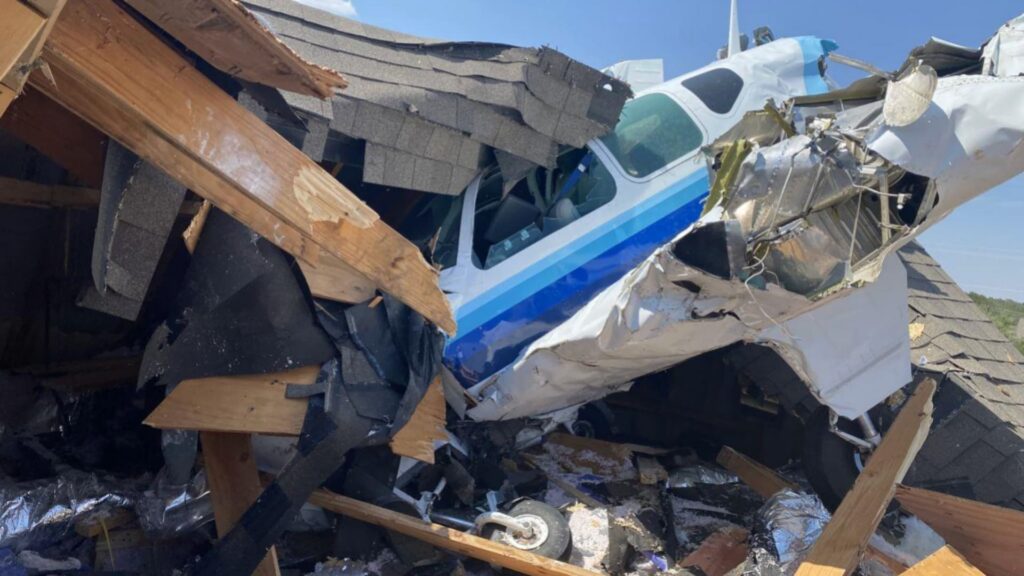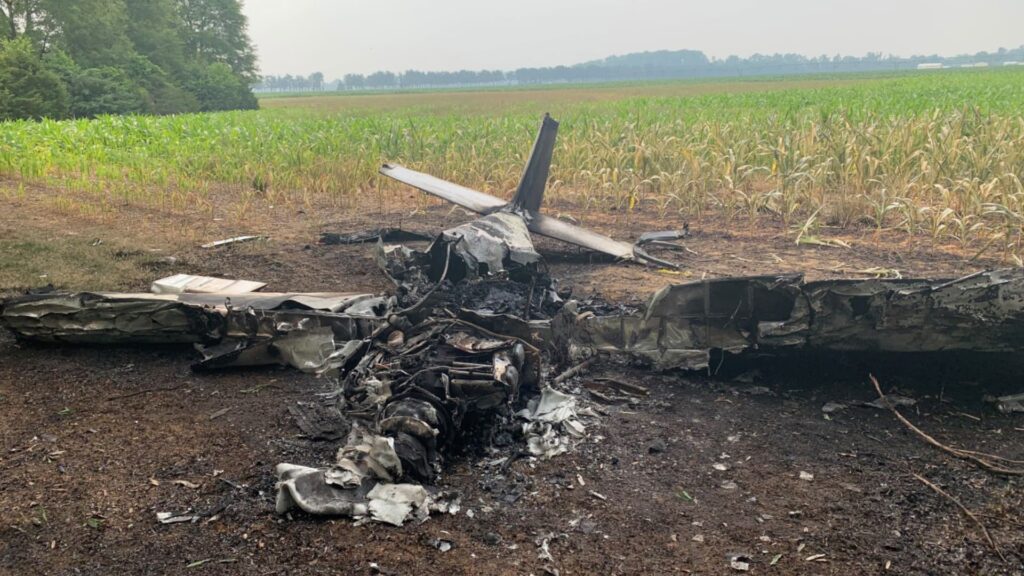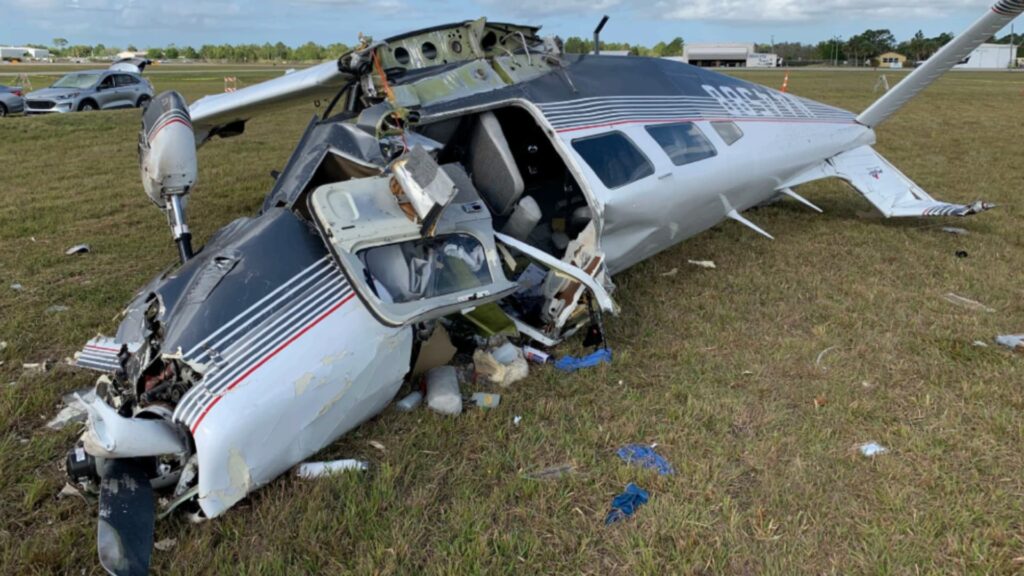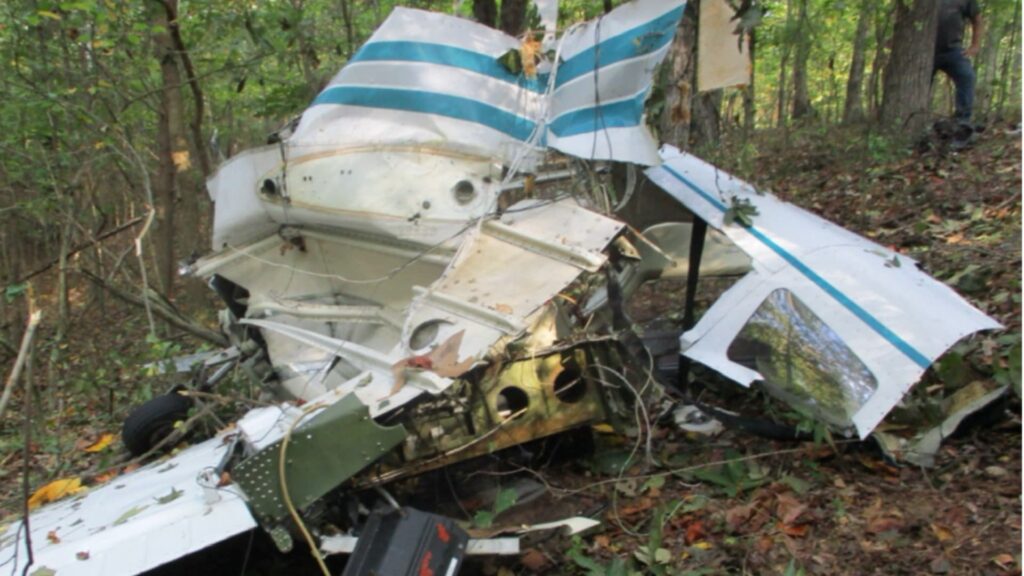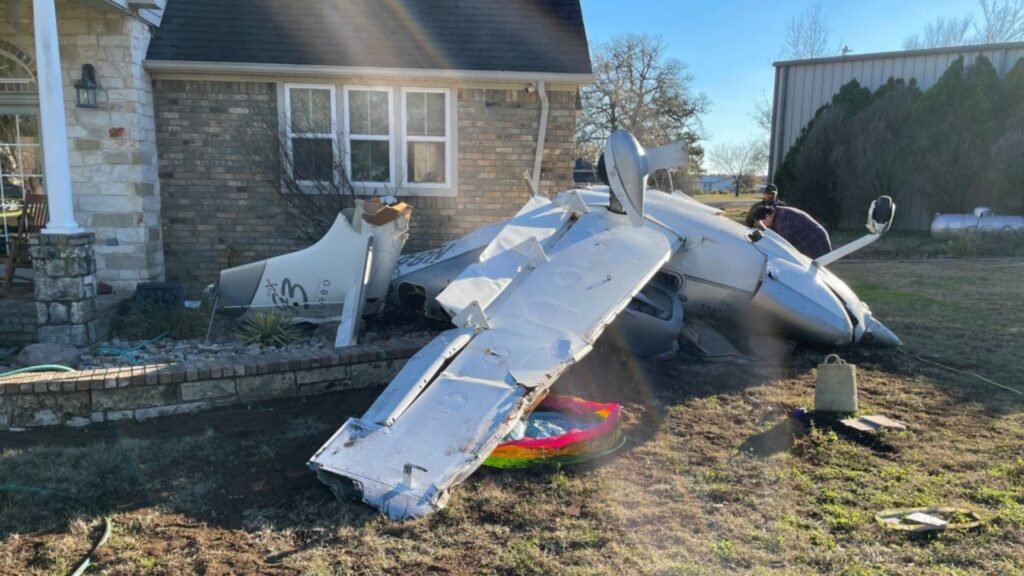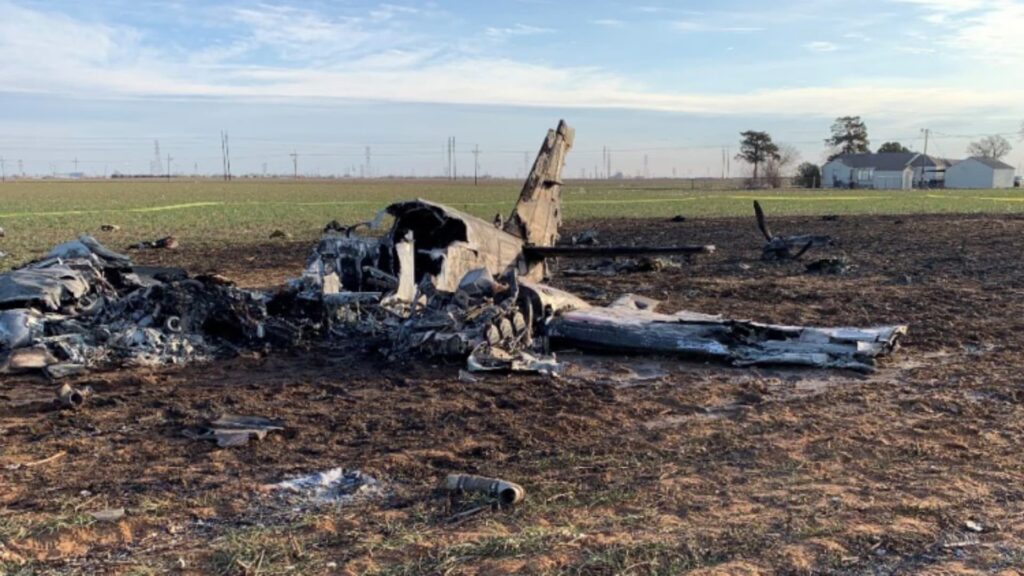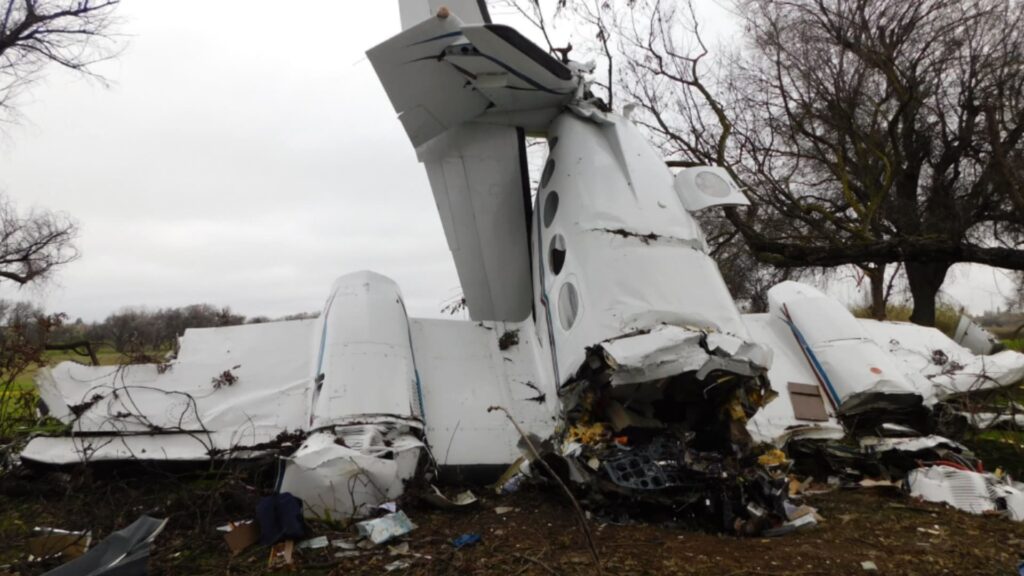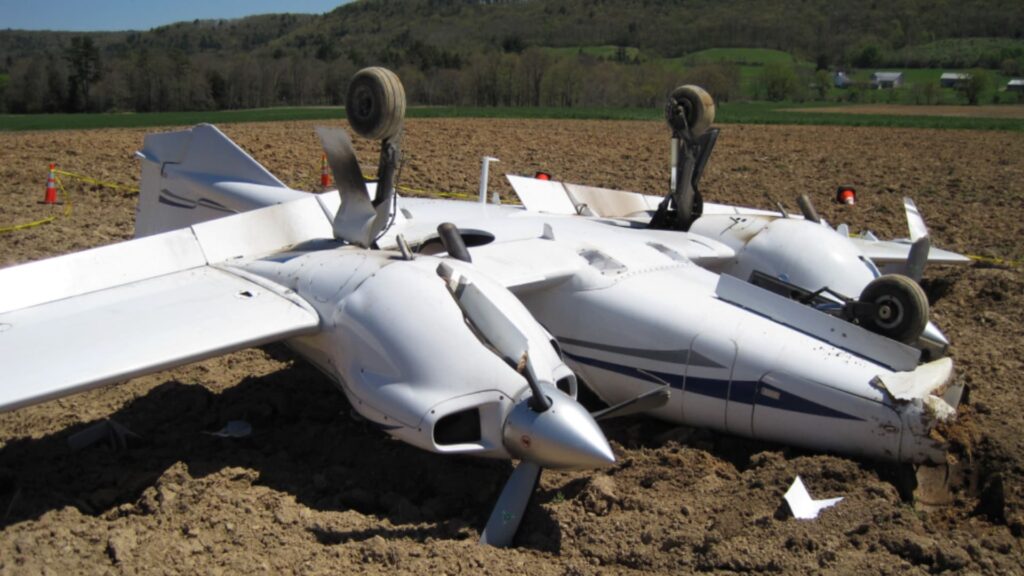If you’ve flown enough simple out-and-backs, you know how they’re supposed to feel: light, predictable, and honestly a little boring. That’s what this Beech H35 Bonanza trip looked like on paper—out of Georgetown, Texas, over to Fredericksburg for lunch, and back to GTU in time for the afternoon heat. The pilot had the experience to make it uneventful, too: a 51-year-old commercial pilot with instrument privileges, 4,805 total hours, and 1,203 hours in this make and model. No instructor ratings, but current with a second-class medical just two days prior. That’s a solid résumé for a Sunday cross-country.
Pilot and Airplane
This particular H35 was a 1957 airframe that had been upgraded—decades earlier—with a Continental IO-520 under an STC, a popular conversion in the Bonanza world. Rated at 240 horsepower in this installation, it’s a fuel-injected setup that, when healthy, usually rewards you with smooth throttle response. Maintenance records showed a fuel pump swap about 18 months before the accident and a fuel system adjustment at that time; about 29 hours had accrued since that work. The annual had been signed off in early January of the same year.
The pilot had purchased the airplane roughly a month prior. A friend ferried it from California to Texas and then gave the pilot a familiarization flight in the weeks before the event. That background matters: he knew the airplane, but he was still relatively new to this particular bird.
Out and Back
The morning of July 23, 2023, started normally. The main and auxiliary tanks were full before the outbound leg to Fredericksburg (T82); the wingtip tanks were not fueled. They flew 33 minutes to lunch, left the airplane unfueled at T82, and launched for home a bit before 11:30 a.m. ADS-B showed the return leg departing around 11:24, with the last data point hitting at 11:52—right over the eventual impact area, about a mile south-southwest of GTU. Conditions were VMC: winds light at 5 knots, severe Texas heat at 35°C, altimeter 30.06, and clear skies. Nothing in the weather that would complicate a pattern entry.
A Sudden Silence on Base
The flight back felt normal—run-up, takeoff, climb, cruise—until the airplane was established on left base for GTU. After configuring for landing, the pilot went to add power…and the engine didn’t respond. He ran the quick checks: fuel boost pump on, tank selection change. No joy. He told the tower they’d lost power, and seconds later the airplane descended into an unoccupied two-story house, punching through the roof and coming to rest on the second floor. Everyone aboard suffered minor injuries; there was no post-impact fire. It’s hard to imagine a scarier finale to a pattern-altitude power loss, and it’s a testament to energy management that all three walked away.
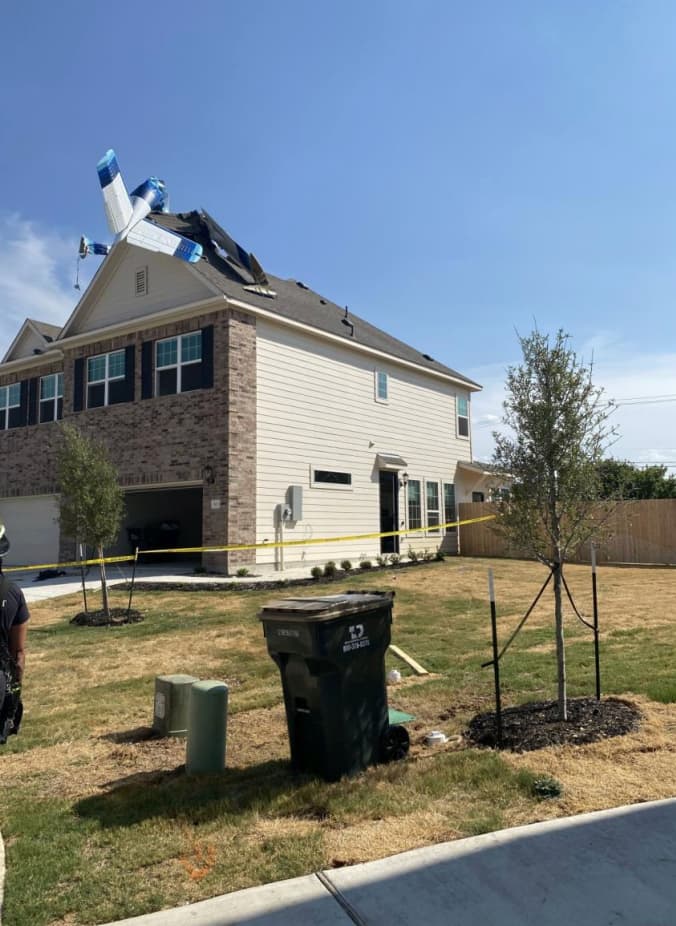
What the Wreckage Said—and Didn’t
Investigators were able to confirm continuity of the fuel system from each wing root to the fuel selector using compressed air. The selector itself rotated normally, though its detents at each position were described as “not pronounced,” which is one of those tactile clues that can matter in a high-stress cockpit moment. The electric boost pump worked on test. The fuel strainer showed some water, and the screen was partially blocked with debris. Importantly, however, the recovery operator noted the airplane sat outside after the crash—store a broken airplane in the weather for a while and it’s easy to contaminate the system, which muddies the forensic picture of what was actually on board during the flight.
The engine itself started and ran on a test stand. It accelerated smoothly and responded to throttle inputs, but it didn’t quite make the numbers: with full throttle, the engine turned 2,450 rpm instead of the 2,700 rpm you’d expect for maximum rated power. Fuel pressure read 18.2 psi—about a pound above the 17.2-psi limit. When technicians leaned the mixture to bring fuel pressure down to 16.0 psi, the rpm barely changed, registering 2,432. Fuel pressure is field-adjustable on this installation, which could explain the slightly high reading, but the key takeaway is that despite the bench numbers, the motor ran without obvious stumbles.
Probable Cause: The Frustrating Kind
In the end, the NTSB could not pinpoint a cause. The official line was a loss of engine power for undetermined reasons. Given that the engine had performed normally all morning—and for most of the return leg—the Board concluded the debris and water in the strainer likely were not present in flight but introduced during outdoor storage after recovery. That’s not emotionally satisfying, but it’s an honest read of the evidence.
The Human Factors Layer
Let’s talk cockpit reality. Pattern work is busy—even more so on a hot day in a high-performance, fuel-injected Bonanza with a relatively new owner at the controls. On left base, you’re configuring, talking to tower, managing energy, and thinking about traffic. When the engine doesn’t spool up, the instinct is to fix the problem. The pilot did what most of us would do: boost pump on, swap tanks. But stress compresses time, and the window to troubleshoot is tiny. You might have five to ten seconds before the sink rate becomes undeniable. That’s barely enough for a single well-chosen action, let alone two or three.
That’s why tactile details—like crisp fuel-selector detents—matter. With fuzzy indexing, a rushed tank change can land you between detents. I’m not saying that happened here; the evidence doesn’t prove it. But if you fly airplanes with vague-feeling selectors, it’s worth addressing during maintenance and compensating with an exaggerated “point-confirm-verbalize” habit in the cockpit.
What Might Have Been Happening
When a fuel-injected engine won’t respond to throttle on base, I mentally walk through four buckets: fuel starvation/selection, vapor issues, mixture/rigging, and mechanical failure. The rigging angle is interesting here. The post-accident run showed sub-spec rpm at full throttle with a slightly high fuel pressure that didn’t correlate to a meaningful rpm increase when leaned to spec. That could hint at a minor setup discrepancy in the fuel system or throttle rigging that left a little power on the table—but not the kind of hard failure that kills an engine. Still, in the pattern, even a modest loss of available power can feel like “no response,” especially if you’re already low, slow, and configured. Again, that’s informed speculation, not a finding. The report doesn’t support a neat answer.
Fuel load and tank usage also deserve a mention. The airplane launched that morning with mains and auxiliaries full, tips empty, and wasn’t refueled for the return. Run time for both legs landed in the one-hour-ish range combined, so endurance shouldn’t have been an immediate problem. But any time you’re moving among multiple tanks, the chance of a selection-related interruption creeps up. The pilot reported switching tanks and using the boost pump to troubleshoot, and it didn’t restore power. Given the system tested continuous and vents were clear, there’s no smoking gun here—just a reminder that tank management is a human-systems interface as much as a mechanical system.
Energy Management Saved the Day
The impact narrative matters: no fire, three minor injuries, and the airplane came to rest on the second floor of an unoccupied house. That suggests a wings-level, controlled arrival with enough pitch authority preserved to avoid a stall break. In a low-altitude power-loss scenario, trading configuration for glide quickly—flaps and gear as appropriate for your airplane’s book numbers—buys you choices. So does flying a slightly higher, slightly faster pattern on hot days. None of that guarantees a runway, but it can turn a roof impact into a survivable forced landing.
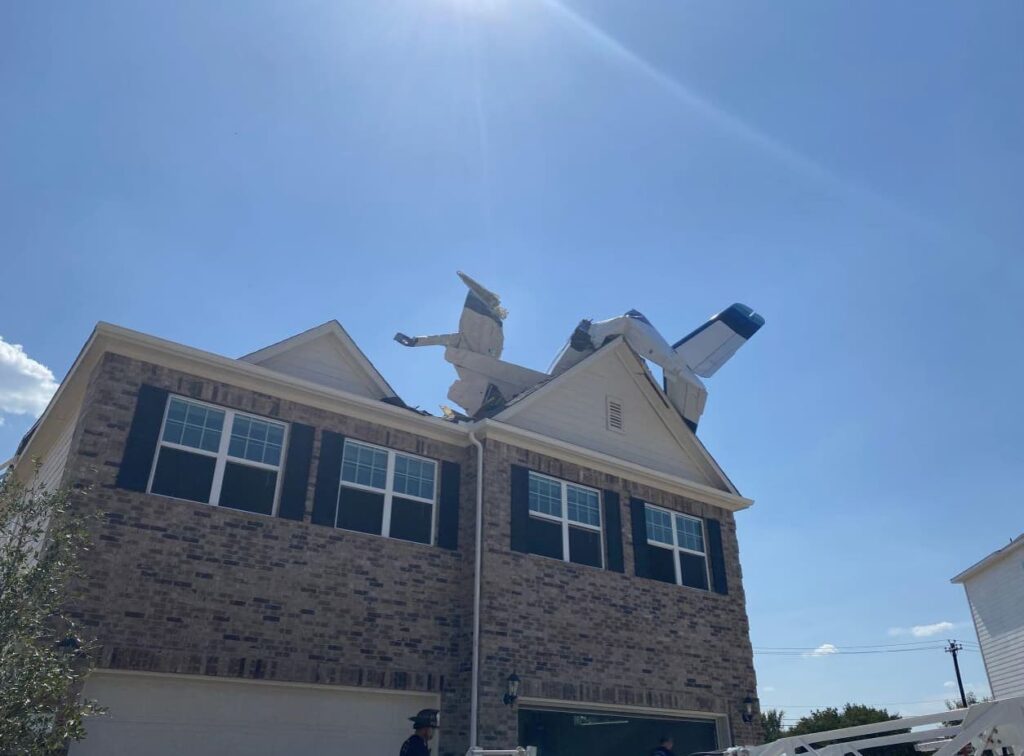
Safety Takeaways
- Know your selector and practice the flow. If the detents are mushy, get it fixed. In the meantime, slow down the action: guard the handle, trace the line mentally, and verbalize the position. Under stress, positive indexing is everything.
- Build a single best action for “no power on base.” Mine is mixture-prop-throttle full forward, boost pump as required per POH, verify the expected tank, and then—crucially—pitch for best glide and fly the airplane. If one move doesn’t fix it immediately, commit to the landing. Time is not your friend here.
- Validate fuel-system adjustments on a hot-day run-up. If your engine monitor or tach hints you’re not making expected power, don’t rationalize it away. The post-accident engine produced less than rated rpm at full throttle and carried slightly high fuel pressure; neither explains the power loss, but both are breadcrumbs worth chasing before they become a footnote in a report.
- Pattern discipline beats improvisation. Fly a consistent, slightly conservative pattern in high density-altitude conditions. Extra margin on downwind or base gives you more glide options if the engine sags when you need it most.
- Debrief the human factors. A new-to-you airframe, a busy Class D pattern, and summer heat add up. Brief your “if it quits here” options before you descend into the pattern. That preloaded plan can shave seconds off the transition from troubleshoot to fly-the-glider.
Bottom Line
This was not a mystery airplane with a sketchy history or a low-time pilot in over his head. It was an experienced aviator in a well-known type that had been upgraded, maintained, and flown successfully that very morning. The engine quit responding at the worst possible time, and despite a thorough investigation, there’s no tidy culprit. When the cause is “undetermined,” the lesson set defaults to fundamentals: configuration, selection discipline, power-check skepticism, and energy management. Those are the tools that turn a roof strike into a survivable accident—and they’re the same tools we carry into every circuit.

